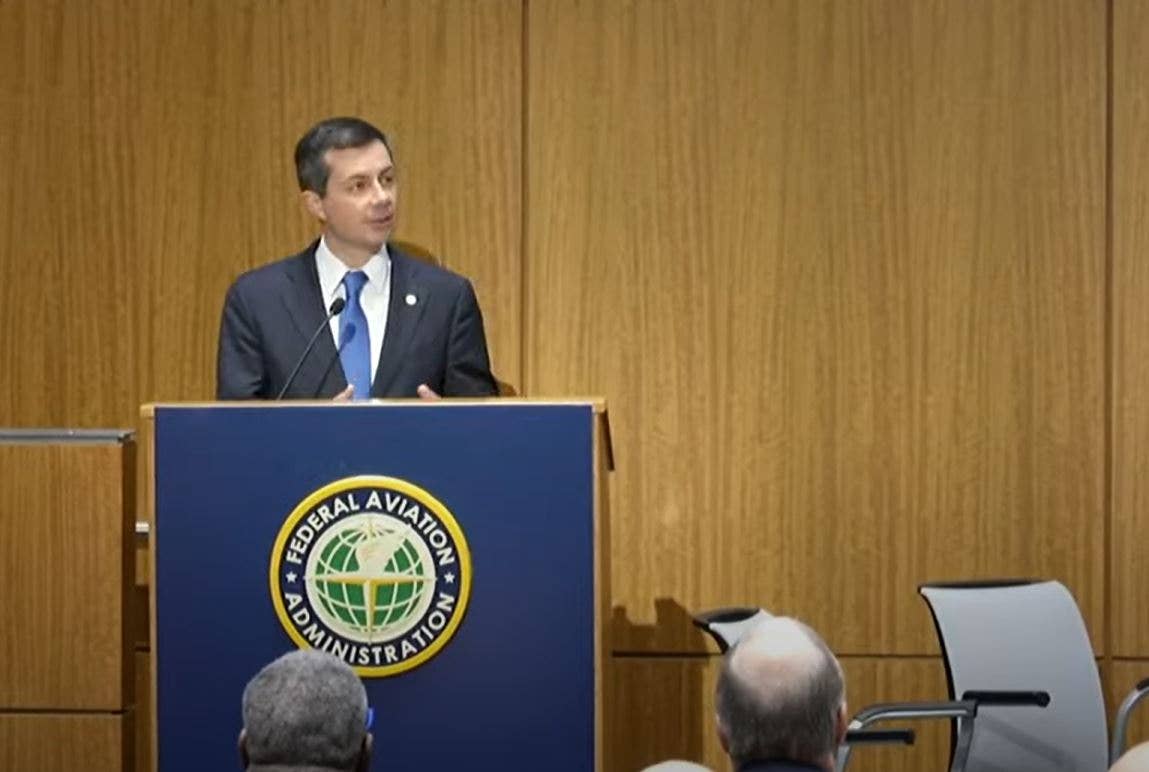Rise in Aviation Mishaps Focus of FAA Safety Summit
Transportation leaders and aviation stakeholders met Wednesday to discuss commonalities in a string of close calls at U.S. airports.

“Initial information suggests that more mistakes than usual are happening across the system,” Transportation Secretary Pete Buttigieg said Wednesday during the FAA Safety Summit in Washington, D.C. [Credit: FAA/Screenshot]
The day before Wednesday’s much-anticipated FAA Safety Summit to address a series of close calls and identify risks to the aviation industry, yet another alarming incident came to light.
A runway event occurred at Ronald Reagan Washington National Airport in Washington, D.C. on March 7. According to reports, a Republic Airways Embraer E175 made a wrong turn and crossed a runway as a United Airlines Airbus A319 was preparing to take off.
The incident marks the seventh close call being investigated by the National Transportation Safety Board (NTSB) and/or the FAA this year—including six at U.S. airports and one over the Pacific Ocean—and comes as the Biden Administration said it wants to hire thousands of new air traffic controllers.
The uptick of these incidents led FAA Acting Administrator Billy Nolen to call for Wednesday’s Safety Summit last month, noting that "recent events remind us that we must not become complacent. Now is the time to stare into the data and ask hard questions."
Transportation Secretary Pete Buttigieg, NTSB Chairwoman Jennifer Homendy, and former NTSB Chair Robert Sumwalt spoke alongside Nolen during Wednesday’s summit. In addition, leaders from different sectors of the industry participated in a panel to pry into the root causes and commonalities of such instances and discuss the challenges facing a strained industry.
“I look at them like a fever in a human body and that it is signaling that something is not right," Sumwalt said of recent events. "I think these are very much precursor events that could be signaling that there's something more serious in the system."
In his opening remarks, Buttigieg said, “Initial information suggests that more mistakes than usual are happening across the system— on runways, at gates when planes are pushing back, in control towers, and on flight decks. Today is about the entire system. This is a key priority for the FAA, for the entire department, and for the Biden-Harris administration.”
With 45,000 flights a day and with no major fatality event since the Colgan Air crash in 2009, Nolen stressed that the U.S. national aviation system is the safest it’s ever been. However, he acknowledged that recent incidents are “not what we’ve come to expect.”
Homendy agreed, saying, “the absence of a fatality or accident doesn’t mean the presence of safety.” She went on to state that there are roughly 1,500 to 1,700 runway incursions annually, most of which are low risk, “but it only takes one.”
In their discussions, stakeholders suggested that an unprecedented surge in air travel, staffing shortages, and lack of funding for new technologies are contributing factors to a strained aviation industry. Nolen also acknowledged that DOT has included a $117 million budget request for the FAA to hire 1,800 new air traffic controllers next year in addition to the 1,500 hired this year.
Participants agreed that the industry must be vigilant as demand for air travel is up, and the skies are becoming more crowded. New technology-driven aircraft such as those introduced under the umbrella of advanced air mobility are on the cusp of joining already-congested airspace, and the industry needs to keep pace.

Subscribe to Our Newsletter
Get the latest FLYING stories delivered directly to your inbox






